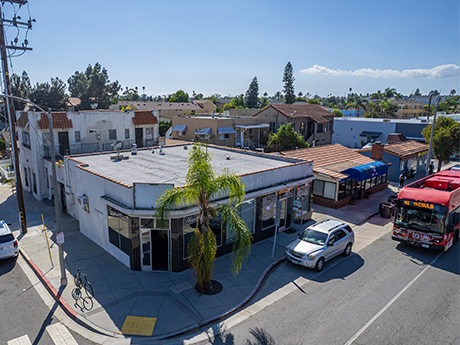— By Jason DuFault, Regional Managing Director – Southern California, KW Commercial —
With a population of about 440,000, the City of Long Beach has grown substantially over the past two decades. This is due, in part, to the draw of its coastal location, public spaces, dining and nightlife, employment, the ports of Los Angeles and Long Beach, and its many tourist attractions, including the Queen Mary and the Aquarium of the Pacific. This all bodes well for the retail sector. However, over the past 18 months, the retail market has been inconsistent for success based on location.
The city’s overall vacancy rate is currently around 4.3 percent, with the most challenged market being downtown Long Beach, which is currently at 4.6 percent. While the vacancy is still low by most standards, I believe it will likely increase before it gets better. Like many CBDs across the nation, Long Beach’s office vacancy has been high. The decline in the daytime population has retailers struggling. The most challenging projects to rent out retail-wise seem to be the newer vintage mixed-use properties.
On the other hand, smaller submarkets in east Long Beach, such as Second Street and Naples, have been strong, giving birth to retailers’ and restauranteurs’ new dreams and garnering high rents. I think it is important to highlight that these beach-close submarkets tend to have generational landlords. These long-time owners have minimal to zero debt on their assets. Therefore, they have the advantage of being patient with a vacant storefront for a longer period of time while they hold out for that ideal tenant that is willing to pay premium rent. With that said, rents are rising and retailers and restaurants are paying north of $5.25 per square foot in the Second Street and Naples areas.
Restaurants and bars have been performing very well. Over the past year, there have been a number of new establishments, including Viaje Restaurant and Louie’s on 2nd. A new restaurant called 4 Shore will be opening in the Naples submarket. The new endeavor is from Joshua Sanchez, founder and CEO of Unlimited Management, and John Ross III, a wide receiver for the Kansas City Chiefs.
Retail has been hit and miss as it competes with ecommerce, but pets has emerged as a popular local retail category thanks to the dense surrounding residential population. This trend was put into overdrive during the pandemic when pet adoptions increased. We’ve seen a number of high-end pet supply and pet boarding/daycare stores open along Second Street, including Pet Food Express and House of Paw. Overall, these pet-centric retailers have been experiencing high sales, which is good because they are paying premium rents.
From an investment perspective, it is the same tune in Long Beach as it is nationwide: sales are few and far between as the cost of debt has been rising. Investors who can pay all cash or manage a high down payment are coming up winners as distressed or motivated sellers are willing to negotiate on pricing. Owner-users are also a good bet for retail property acquisitions. We are currently marketing a retail asset for sale on Anaheim Street in the downtown market and have had a significant amount of interest from restaurant owner-users.
Long Beach’s one and only current retail development is 4 Corners, a mixed-use, 1,200-unit residential and ground-floor retail project. It is breaking ground this year, with completion anticipated in 2026. This may be good timing as market recovery is expected to happen prior to that time.
Overall, the City of Long Beach continues to attract a highly educated, young population that enjoys dining, bars, entertainment and all of the other benefits of living by the beach. As people return to the office, the downtown CBD will make a slow recovery, and retail will follow. The hope is that the leadership within Long Beach will work to provide incentives to help speed up recovery so the entire city can benefit from a thriving residential, retail and job center in the heart of Southern California.


